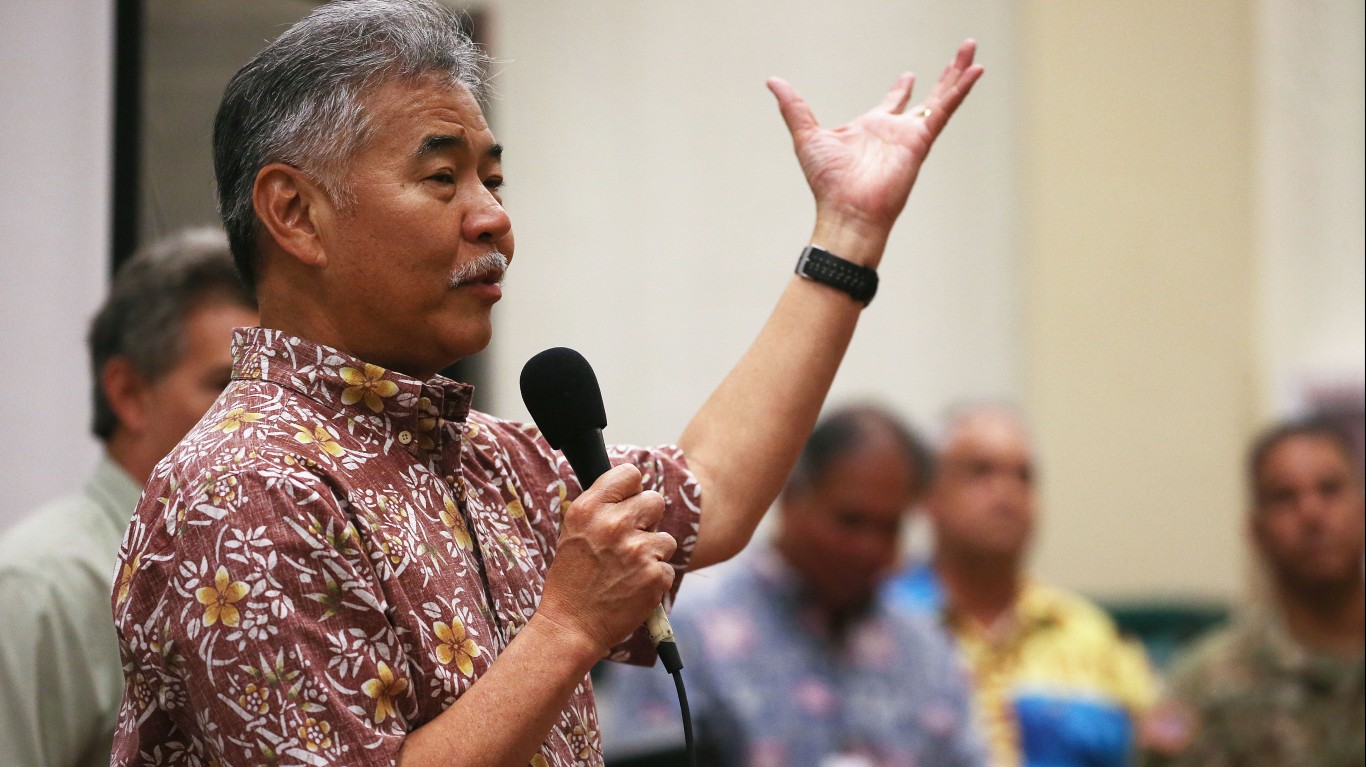
During the COVID-19 pandemic, the federal government has provided emergency economic stimulus packages and funded vaccine research and development programs. Meanwhile, state governments have borne the responsibility of slowing the spread of the virus, while trying to minimize the economic fallout.
Striking an optimal balance between public health and economic considerations during the pandemic has proven to be a politically fraught task, one that has often eluded broad consensus. Public opinion polls show that nearly all state governors have paid a political price for their handling of the coronavirus, though some have navigated the crisis more adroitly than others.
Using the November 2, 2020, report, “The State of the Nation: A 50-State COVID-19 Survey,” a joint survey from Northeastern University, Harvard University, Rutgers University and Northwestern University, 24/7 Wall St. reviewed the most and least popular governors in America. Governors are ranked based on the share of residents who either approve or strongly approve of their handling the pandemic. All polling data was collected between October 2 and 25, 2020.
Governor approval ratings vary by state, from as high as 80% to as low as 26%. With only a few exceptions, most governors are less popular now than they were in the early days of the pandemic. Governor approval ratings fell by an average of 16 points between late April and October. In several states, public opinion has dropped by 20 or more points. Vermont Governor Phil Scott, a Republican, is the only governor more popular now than at the beginning of the pandemic.
Though there are several exceptions, the states where governors have the highest approval ratings tend to be those with lower than average per capita COVID-19 infection rates. Though unemployment rates tend to be slightly lower in states where COVID-19 has infected a larger share of the population, governor approval ratings in these areas still tend to be low.
Since these polls were taken, there have been several gubernatorial elections and two governors on our list are no longer serving. Former Montana Governor Steve Bullock, facing a term limit, left office on January 4, 2021. Additionally, former Utah Governor Gary R. Herbert did not seek reelection in 2020 and also left office on January 4, 2021.
Governor David Ige (D) of Hawaii is the least popular governor with an extremely low 26% of residents who “approve or strongly approve” of his work. His highest approval rating during the COVID-19 pandemic was 43% in late June. His lowest approval rating in that time was 26%, where it is currently. The November 2020 unemployment in Hawaii was 10.1%, which is the second highest among all states. COVID-19 infections as of January 10, 2021, were 1,643 per 100,000 people, the second lowest among all states.
Click here to see the most and least popular governors during the pandemic.
Click here for detailed methodology.
Take Charge of Your Retirement In Just A Few Minutes (Sponsor)
Retirement planning doesn’t have to feel overwhelming. The key is finding expert guidance—and SmartAsset’s simple quiz makes it easier than ever for you to connect with a vetted financial advisor.
Here’s how it works:
- Answer a Few Simple Questions. Tell us a bit about your goals and preferences—it only takes a few minutes!
- Get Matched with Vetted Advisors Our smart tool matches you with up to three pre-screened, vetted advisors who serve your area and are held to a fiduciary standard to act in your best interests. Click here to begin
- Choose Your Fit Review their profiles, schedule an introductory call (or meet in person), and select the advisor who feel is right for you.
Why wait? Start building the retirement you’ve always dreamed of. Click here to get started today!
Thank you for reading! Have some feedback for us?
Contact the 24/7 Wall St. editorial team.


